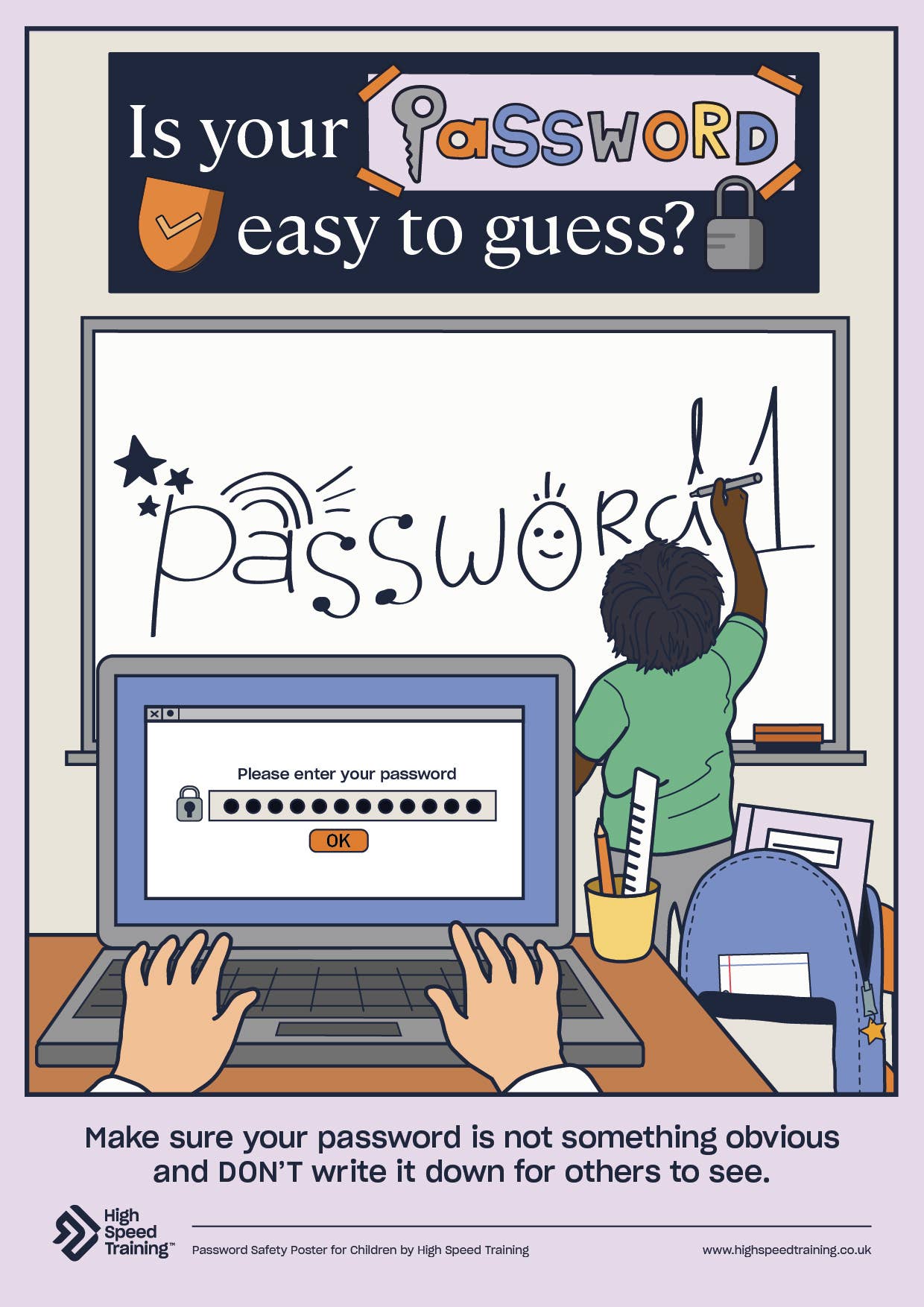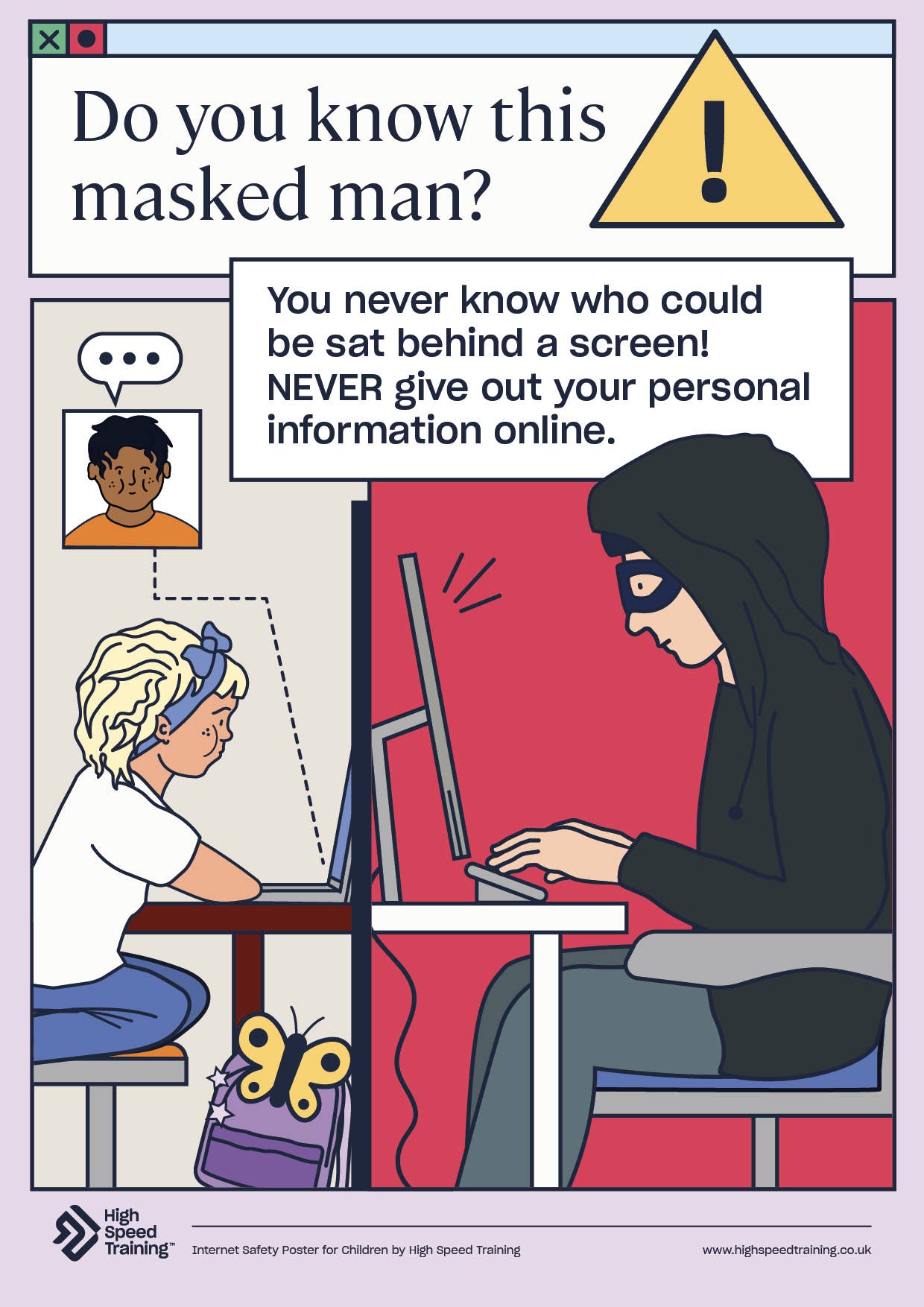Internet Safety Posters for Schools
Online activity now plays a large part in most children’s lives. There are many positive benefits to this – in terms of social interaction, learning and development. However, online activity can also mean exposure to potential online risks and harms
To reduce the number of risks, it’s essential that children know how to keep themselves safe online and what to do when something isn’t quite right. If you are a teacher, displaying, and referencing, internet safety posters in your classroom can be a good way to inform students and keep them regularly reminded.
We’ve made a set of internet safety posters for schools that you can download, print and display as you wish.

Social Media Safety Poster for Schools
Social networking is a hugely popular online activity. Despite most social media platforms carrying age limits of 13, many children and young people regularly access social media. This includes websites and apps, such as Facebook, Instagram and Snapchat, where users can share content, interact with content generated by others and network with people online.
Social media can expose children to all four of the categories of online risks defined by Keeping Children Safe in Education. These are:
- Content risks – being exposed to illegal, inappropriate or harmful content.
- Contact risks – being subjected to harmful online interaction with other users.
- Conduct risks – online behaviour that increases the likelihood of, or causes, harm.
- Commerce risks – risks with a financial implication.
Social media can bring risks of child on child abuse, including bullying and harmful sexual behaviour, accessing inappropriate content and grooming, amongst others. Groomers often use social media to target children. Grooming is when somebody builds an emotional connection with a child and gains their trust for the purpose of abuse, including sexual abuse (online or in person), sexual or criminal exploitation, or radicalisation.
Therefore, teaching children the importance of social media safety is essential. We’ve made a social media safety poster that demonstrates the often ‘dark’ world of the internet. It shows a child taking a picture of themselves and sending it to someone else. This person then screenshots the image and shares it around, before it eventually ends up with a suspicious looking character. The aim of this poster is to make children think twice before they send pictures. You can download this poster below.

Top 10 Tips to Stay Safe Online Poster
We’ve created a poster showing our top 10 tips for staying safe online. You could put this on the wall of your classroom or in a corridor where everyone can see it – it’s a good reminder for children to be cautious in their online behaviour, reinforcing your teaching around online safety within the curriculum. You can download the poster below.

Keeping Safe Online: Log Out Poster
It’s crucial that children know the importance of logging out of computers and their accounts, such as email and gaming accounts, on shared devices. If they don’t log out, then somebody may easily gain access to the data contained on that computer, including photos and personal documents.
We’ve made an internet safety poster for children that shows the importance of logging out of computers. It shows a stereotypical image of a robber, stealing from a computer – comparing staying logged in to leaving your front door wide open. You wouldn’t leave your home open for anyone to wander in, so you shouldn’t do the same with your computer either. You can download this poster below.

Need a Course?
Our Online Safety and Harms Course will help you understand the potential online risks and harms children face, to recognise signs that might indicate online harm or abuse and to effectively address online safety in school.
Password Safety Poster for Children
Computer security is important for everyone for a variety of reasons, such as to avoid your accounts being hacked or having strangers gain access to your personal information and documents. Children should be taught the importance of computer security at a young age, so that they can protect themselves online and carry this knowledge through into their adult lives.
We’ve created an internet safety poster for schools that introduces children to the importance of having strong passwords. It shows a child writing a ‘weak’ password on a board in the classroom, which another child can see. This shows that you should never write your password down and that it shouldn’t be an obvious one or one that is easily guessed. You can download this poster below.

E-Safety Poster: Masked Man
When we are online, we never really know who is at the other side of the screen. We can usually be sure that our friends are who they say they are, but this isn’t the case for everyone. The lack of face-to-face contact that comes with the internet gives groomers the anonymity they need to target children. They can lie about their name, age, and occupation and they can pretend that they know the child’s friends or family to try and build a relationship with them. Often, groomers will use information a child has posted to make a connection. Details such as school uniforms in posts or regularly ‘checking in’ to places on social media feeds can provide them with a great deal of information. It’s crucial that children know the importance of not connecting with strangers and understand that not everyone online is who they say they are.
We’ve created an online safety poster that demonstrates this. The poster shows a masked figure sitting behind a computer screen. It illustrates that people are not always who they say they are and so you shouldn’t talk to somebody unless you are certain who they are. You can download this poster below.

Children can encounter a range of online harms and risks, and it is part of a school’s safeguarding duty to make sure that they know how to keep themselves and others safe online. Displaying, and regularly referring to, internet safety posters in your school, like those we have shared with you in this article, acts as a constant reminder of online risks and how children can protect themselves from harm.
What to Read Next:
- The Importance of Teaching Social Media Safety in Schools
- How to Respond to Dangerous Online Challenges: Guidance for Schools
- Online Safety and Harms Quiz
- How Much Do You Know About Internet Safety? KS2 Quiz
- Screen Time for Children: Advice for Parents
- Mobile Phones in Schools Debate: Advantages and Disadvantages
- Technology in Education
- Online Safety & Harms Course











